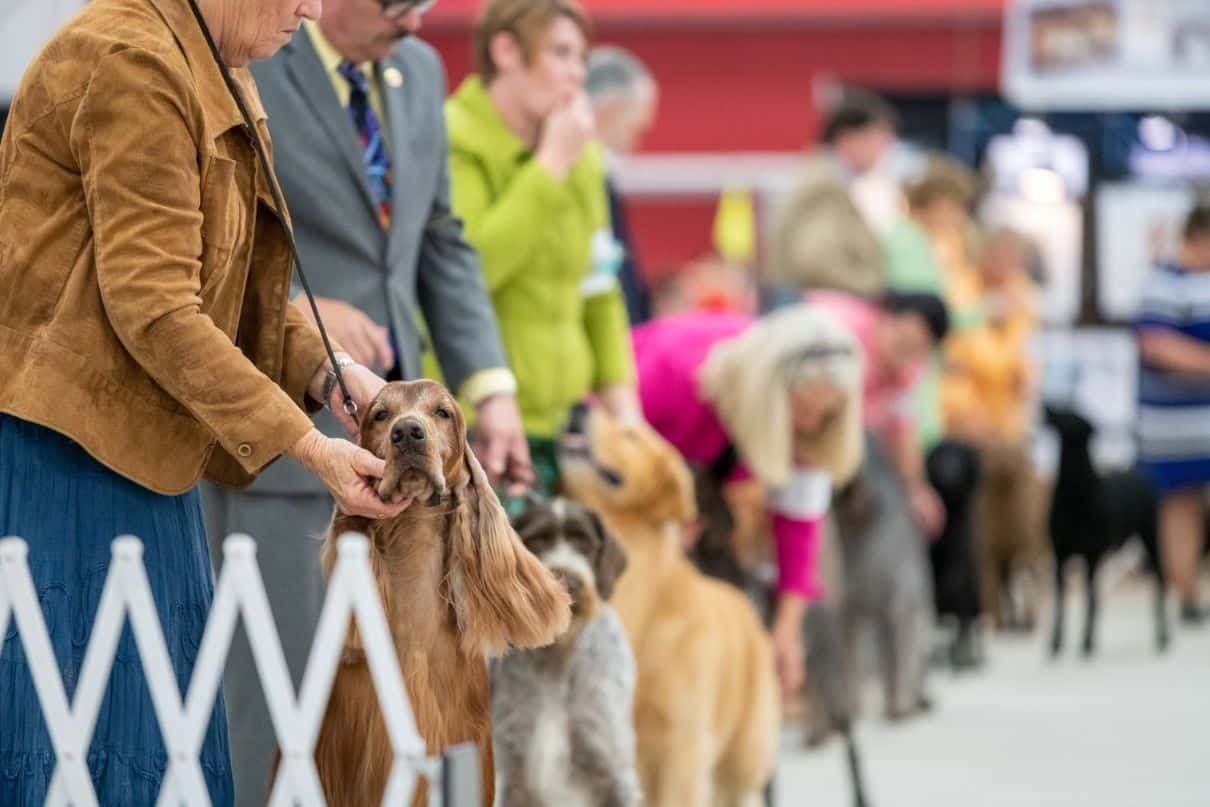This month, Showsight is celebrating its 30th Anniversary as a leading voice of the purebred dog community. So, it seems a fitting time to consider the typical owner handler’s journey in the sport of dogs. Like a publication that is launched with aspirations of providing exceptional content to attract subscribers, advertisers, and readers, owner handlers step into the ring with a desire to grow in partnership with their dog, attracting the attention of judges and students of the various breeds along the way. And like the publisher of a print magazine (or an “e-zine”), the owner handler is optimistic yet thoughtful, ambitious yet careful, hopeful yet willing to put in the hard work. Both publishers and owner handlers have a story to tell that is shaped by each success and every failure, and both require a dedication that must endure the challenges that come with changing times and fresh competition. Showing dogs, like publishing, is an endurance trial of sorts that tests an individual’s mettle and can be measured in months, years, and even decades.
Owner Handler’s Journey – The First 10 Years
The novice owner handler has the distinct advantage of arriving on the scene without credentials. Unlike the second or third generation exhibitor who has a legacy to uphold, the rookie can afford to make mistakes without anyone noticing—or caring very much. Once that first win is awarded, however, the novice often finds him or herself at the point of no return. With that championship becoming a real possibility, the newcomer has an important choice to make: Go forward or get out while you can! Many choose to stick it out for five years or so, putting a few titles on their dog in the process. Others demonstrate their commitment to the sport by welcoming a second dog into their family, and in doing so they learn if they’ve truly got what it takes to “go the distance.” For in all likelihood, the second dog is nothing like the first, and its presence makes it clear that having a little bit of experience can be worse than having none at all. After ten years, it’s pretty clear that the newbie still has so much more to learn.
Owner Handler’s Journey – The First 20 Years
Armed with the experience of showing a dog or two (and maybe breeding a litter or two), owner handlers can confidently shed the “novice” designation in favor of being considered an “intermediate” exhibitor of sorts. The new moniker acknowledges some familiarity with the highs and lows of competing in a sport that relies heavily on subjective interpretation, but it also recognizes that there’s more to conformation shows than mere opinion. During this second phase of an exhibitor’s career, the experience that has been gained can now be applied with a greater understanding of the risks involved in a competition that pits amateurs against professionals. Now, the investment in knowledge that has been made can be expressed in the ring with greater confidence—as it will surely be tested in the whelping box. Now, with some real-world know-how, comes the responsibility to give back to the sport in some way. It is during the exhibitor’s “sophomore” season that owner handlers begin to find their place in the world of purebred dogs as a volunteer, committee member, handler’s assistant, and most significantly, as a preservation breeder.
Owner Handler’s Journey – The First 30 Years
As owner handlers work through their third decade “in dogs,” it may be forgiven if they view themselves as something of an “expert” in their breeds. However, at the 30-year mark, there is a genuine risk in believing there’s nothing left to learn. (Woe to the dog show know-it-all!) It is in the third decade of participation in the sport that exhibitors are more likely to experience “kennel blindness” as well as the desire to breed for extremes. Some owner handlers may no longer find it necessary to seek their mentor’s guidance (which is their right), preferring instead to mentor others. Hopefully, the knowledge that’s disseminated will be as beneficial as the knowledge that was gained. Genuine experts in the sport, after all, are measured by more than just the sum total of all-breed Best in Show wins awarded or champions bred. Bonafide experts are servants to their breeds and slaves to the breed standards. They are also indebted to the sport, choosing the pursuit (and distribution) of knowledge over everything else.
Owner Handler’s Journey – The Next 30 Years
Most serious purebred dog breeders and exhibitors—those who’ve clocked four, five, or six (!) decades of devotion to the sport—have one thing in common: longevity. These “senior” members of the community have earned the right to consider themselves an “authority” on their breeds—simply because they’ve never given up and they’ve always given back. When it comes to breeding, whelping, raising, training, grooming, conditioning, presenting, and awarding any one of the hundreds of recognized breeds that complete in conformation shows across the US and around the world, the individuals who have earned their credentials know exactly where they stand. Today’s legitimate authorities were the novices who realized early on that they needed a better dog. The legitimate authorities weathered the mistakes made during their intermediate years and swallowed their pride for the betterment of the breed. Today’s legitimate authorities understood that becoming an expert hadn’t made them infallible or impervious to trends that come and go. Today’s legitimate authorities recognized, ultimately, that they have the wisdom (and the duty) to preserve the breeds that have been passed down to them so that future generations of novices can do the same.
Onward… to the next 30 years!









